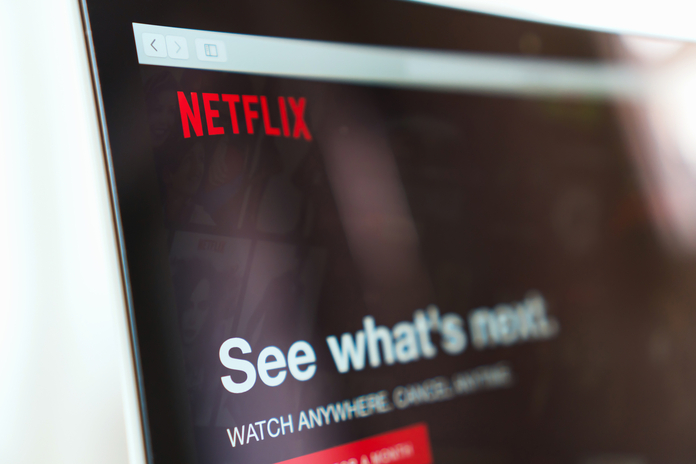As a result of Netflix’s (NASDAQ:NFLX) recent valuation low, now is an excellent moment to weigh the advantages and disadvantages of this company, should there be any upside potential.
There has been little mention of the 200,000 subscriber decrease in Q1 (excluding Russia) and the 970,000 subscriber decline in Q2 on Netflix. Critics assert that this is a result of saturation. Still, it’s much more likely that Covid is pulling ahead of the industry as a whole, as all media stocks — including social media and streaming — showed outsized viewership growth through Q2 2021. Netflix is therefore experiencing some challenging quarters for audience growth comparisons.
Insinuating that the firm is not exactly enjoying the results, Netflix management made it plain that this quarter was “less bad” than the previous one. With a guide of 1 million subscribers, the corporation theoretically returns to growth next quarter. However, this sharply decreased from the 4.4 million in the same quarter last year. It would be quick to assume something fundamentally wrong with a particular firm when the entire media industry was damaged, as indicated, due to the aggregate impact of shelter-in-place across multiple media equities.
It would be wiser to reserve those judgments until H2 2022 through H1 2023 and give it a full year after challenging Covid comparisons have cleared. In the end, the media industry is highly seasonal. By Q4 2022, when business is typically strongest, we should be able to see which companies are doing the best.
There is proof that Netflix is outpacing its competitors in terms of market share. Nielsen has increased Netflix’s market share for engagement from 6.6 to 7.7 percent, putting it ahead of all other subscription services. High-quality material like Stranger Things 4, reported to have been streamed for 1.3 billion hours, is to blame for this.
For Netflix’s Hollywood-caliber programming, advertisers are expected to pay a substantial premium. The high level of engagement the company’s content receives could make for a nice equation for industry-leading ARPU due to demand from exclusive advertisers and the supply, or premium content, that Netflix offers. It’s not just the 100 million people sharing passwords that illustrates what the uptake could be for a lower-priced tier.
Due to currency challenges, Netflix’s most recent quarter saw revenue growth of just 9% as opposed to the predicted 9.7%. However, sales growth was 13% when measured in constant currency. The same was true for Netflix’s guide; while it was a miss due to an FX headwind of 4.7% for the upcoming Q3 quarter, it was a beat due to its 12% revenue guide.
Unsurprisingly, the strong dollar also impacted the operating margin, which fell from 16% in Q3 to 20% in the current quarter. As a result of Netflix’s $305 million unrealized gain from the F/X remeasurement of its Euro debt, the strong dollar resulted in a marginally higher EPS.
The company’s cash flow is Netflix’s most significant line item. Looking back, this has been problematic for Netflix, which lost $3.3 billion in cash in 2019 while expanding its pipeline of original programming. However, according to Netflix management, the company is on a new trajectory, with $1 billion in free cash flow anticipated this year and “significant” free cash flow in 2023.
The company’s debt levels won’t change anytime soon despite the new and improved free cash flow trend. Soon, Netflix is confidently projecting a $10 to $15 billion debt load. This is required to maintain its position as the top media firm in terms of income and engagement. After deducting $5.8 billion in cash, the total debt is reduced to a net debt of $8.5 billion. In 2021, the corporation reduced its cash content spend-to-content amortization ratio from 1.6X to 1.4X. In 2022, it is anticipated to be between 1.2 and 1.3X.
Progressive Catalysts
Netflix may take advantage of a few new revenue streams to re-accelerate customer growth. In addition to launching a new password-sharing program, the company has teamed up with Microsoft to launch new adverts in 2023. Cross-selling frequently leads to more income because customers who would typically churn can now be monetized through ads. Similarly, viewers who have access to Netflix may choose to upgrade to remove commercials. In the end, the shift to advertisements also makes Netflix more recession-proof in case consumers opt to reduce spending.
Risks
The number of soft subscribers as of right now does not indicate saturation, in our opinion. Over the past year, Netflix’s market share has increased. Instead, low subscriber numbers are a product of Covid’s pull on almost all media organizations. Due to the aforementioned triggers, we are confident that Netflix will resume its typical subscriber growth.
Instead, Netflix’s debt in a time of rising rates represents the most significant risk. In times of more challenging macroeconomic conditions, this may lower the company’s valuation more than its ad-tech competitors, which generate excellent cash flow and have little to no debt. If Netflix wants to compete against other paid streaming services and the several broadcast networks that have switched to streaming, it must reduce this debt.
A shift from subscription-only to also including the ad tier entails execution risk. Since the Netflix management team has regularly made progress in fields much more complex than introducing adverts, we believe they are the most qualified in the business to pull off this pivot. Additionally, CTV commercials can be profitable at an ARPU of $40.
We anticipate that Netflix content will break previous ARPU records. With that stated, Netflix is likely to command a higher valuation if it is demonstrated the ad tier will be effective – ETA of H2 2023 – even though the execution risk is lower than it would be with other management teams.
What to Watch: Netflix Stock Price Movement
Has NFLX put in THE bottom? This is the crucial question to ask. We can reduce the risk associated with this question by considering the following three eventualities that could result from the current price range:
Red
Red If this occurs, there is a significantly lower chance that NFLX will reach new highs during the following growth cycle.
Orange
Orange The likelihood is favorable for a push into the $340–405 range if this occurs. If this scenario comes to pass, a bear market rally in this area would see an upswing stall. In this case, the same lower price targets would still apply.
Green
The probabilities will flip in favor of a rise to all-time highs if any revived uptrend can break above $405.
While the rest of the market continued to strike new lows, Netflix hit its bottom in May. Stocks that bottom out early typically set the pace for the subsequent rise. This display of might merits observation.
From 2021 high, there are only three waves left. Although it might not seem important, this is. The likelihood of pushing further into the orange zone before the following leg down is low if this three-wave move down develops into a five-wave move down (red scenario).
A sizable level was regained by the Relative Strength Index (RSI). Take note of the blue arrow at about 57 on the RSI. In this bear market, this was the point where the price peaked right before the waterfall event. It is a sign of strength and an early indication that the green/orange scenario will probably play out that the latest surge higher has recaptured this level.
Conclusion
The likelihood is suitable for a surge into the $340–405 range. The riskier move would be to buy into the subsequent dip as long as $185 is maintained. Waiting for the breakout above $250 would be the safer course of action.
Featured Image: Megapixl © Kamachi209















